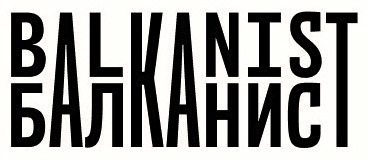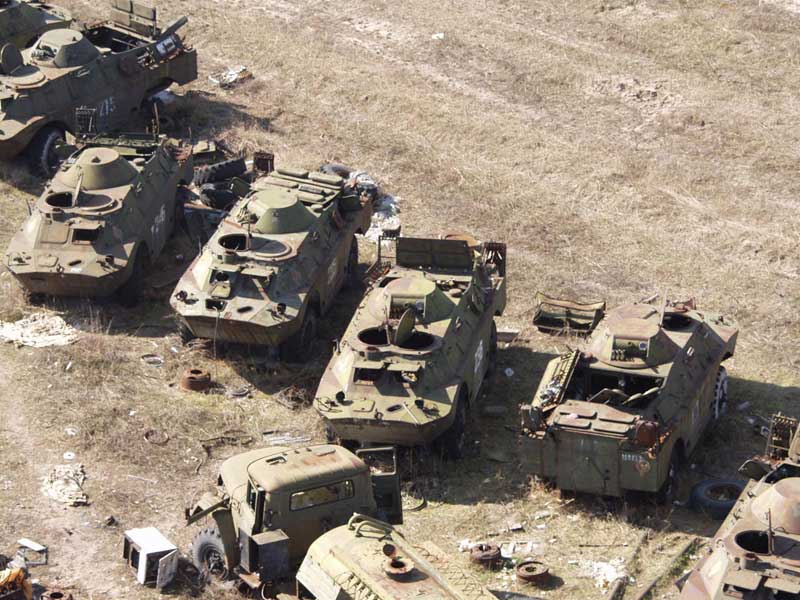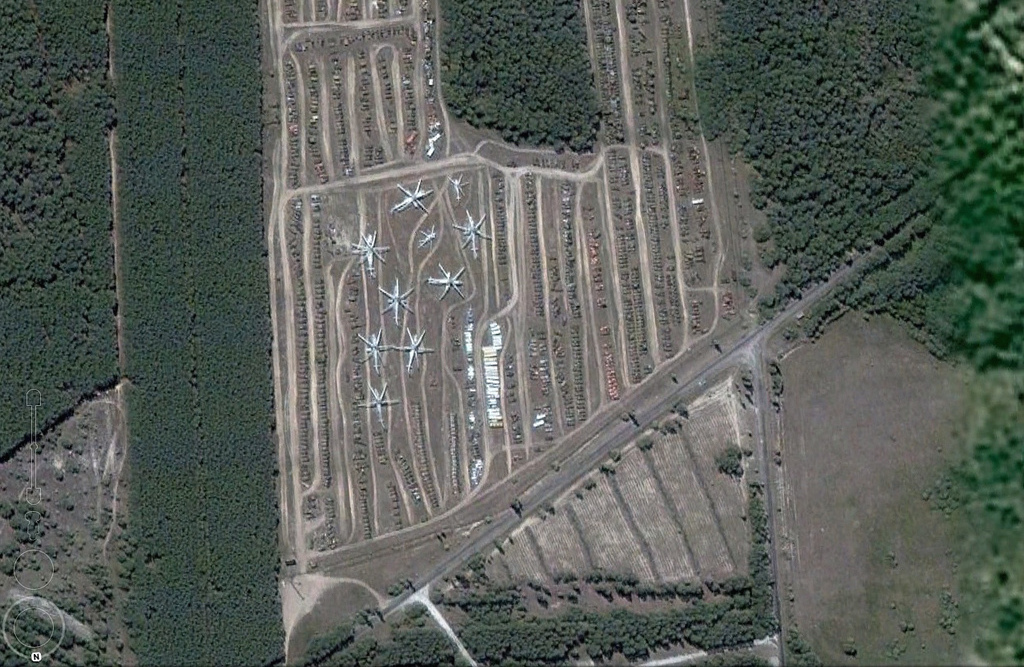
5 Photos
A series of strange events inside the Chernobyl Exclusion Zone has the Ukrainian government making accusations of arson and scientists wondering if an entirely different kind of nuclear disaster is possible — and imminent.
You can’t visit the village of Buryakivka, but if you could, this is what you’d see: 1,350 Soviet vehicles rusting in an open field, most of them missing parts — engines, rotor blades, catalytic converters. For decades, thieves have been able to enter this “mass vehicle graveyard” armed with torches and hacksaws, stealing scrap metal that can then be melted down, reprocessed and sold.
If you could visit Buryakivka, what you wouldn’t see is the radiation. The tainted Rassokha graveyard is bordered by a thick green forest located 25 kilometers southwest of the Chernobyl nuclear power plant. In 1987, the year after the Chernobyl disaster, Ukrainian authorities decided to quarantine the helicopters, tanks, buses, bulldozers, transporters, ambulances, and fire engines that had been heavily irradiated in emergency and cleanup missions. The site is located in the Exclusion Zone, an area covering more than 1,000 miles of Ukraine and Belarus where the public’s access is restricted and in some cases strictly forbidden.
Now a recent series of wildfires in the Exclusion Zone have Ukrainian authorities concerned that arsonists are setting fire to some of the most contaminated corners of the restricted area. Scientists and other observers, meanwhile, have expressed worry for other reasons: that corruption, the decades-long absence of regular farming and forestry in the largely uninhabited region, along with climate change, have made Chernobyl far less secure than it should be.
On April 26th, 1986, a sudden power surge during a systems test at the Chernobyl Nuclear Power Plant created an explosion in Unit-4. The flames from the ensuing fire burned for 10 straight days. Helicopters flew over the smoldering remnants of the charred reactor, covering it in sand, covering it in boron, covering it in cement, finally sealing the flames inside the sarcophagus.
During the accident at Unit-4, about three MCi of radionuclides, predominantly Sr-90 (Strontium-90) and Cs-137 (Cesium-137), were released into the atmosphere. Sr-90 is a soft, shiny silver metal that turns yellow when exposed to air. Once Sr-90 is ingested in food or water, it behaves like calcium in the body, and is readily absorbed into the bones and teeth. It can cause cancers of the bone, bone marrow, and the soft tissues surrounding bones. Meanwhile Cs-137 is almost unnoticeable, as it’s indistinguishable from dust. But external exposure to it can cause burns, acute radiation sickness and death.
Sr-90 and Cs-137 spread far beyond the plant where the initial accident occurred. Subsequent decontamination efforts in the vicinity of the Chernobyl Nuclear Power Plant and in heavily contaminated areas of the surrounding countryside yielded some three million m3 of radioactive waste. About 2.5 million m3 of said waste was localized inside an enclosed structure and in the few temporary outdoor storage sites scattered across the Exclusion Zone. More radioactive waste was simply taken outside of the Exclusion Zone and negligently stashed in garbage dumps.
All village inhabitants and those living in more isolated rural areas close to temporary outdoor storage sites like Rassokha were forced to comply with an emergency evacuation. After the last of the former residents had left, human habitation in the villages surrounding such places was forbidden. Since the open-air vehicle storage facility failed to meet minimal safety standards, officials decided to build a safer facility for radioactive waste that could last for more than 300 years. The decision to construct an industrial complex within the Exclusion Zone “for the decontamination, transportation, treatment and disposal of radioactive waste from the areas contaminated in the aftermath of the accident at the Chernobyl Nuclear Power Plant” (the project’s long title was given the simple code name “Vector”) was officially approved in 1988. Vector’s location was decided on in 1991, after the dissolution of the Soviet Union. The site chosen is just one kilometer from the vehicle graveyard at Buryakivka.
For a “scrapper”, the kilometer-long Rassokha field is a goldmine. Even though recent aerial images show that a number of vehicles have finally been relocated, there are still plenty sitting outside in the brown grass, and an unknown number of vehicles buried underground. It’s the vehicles that were buried that are said to have been the most heavily contaminated with radiation. The open field at Rassokha and its grim burial ground were never supposed to be anything other than temporary emergency storage. The foreman tasked with seeing to it that no scrap scavengers stole any radioactive metal from the site told a filmmaker in 1999, “We’re waiting for the completion of Vector.” But construction on the site didn’t even begin until 1998, a decade after the plan was first approved.
In the meantime, radioactive metal has been scrapped and stolen. On September 11th, 2009, Ukraine’s Security Services (SBU) stopped a truck carrying six passengers as it attempted to leave the Chernobyl Exclusion Zone. The truck happened to be carrying 25 tons of radioactive scrap. The level of radiation emitted by the scrap was 13 times higher than what’s advisable. An SBU investigation revealed that police officers tasked with patrolling the inside of the Exclusion Zone had conspired with the scrappers. One deputy SBU chief was also in on the plan.

The first fully functional phase of Vector wasn’t operable until 2007 — almost 20 years after the facility’s construction was first approved by the authorities. Even Natallia Rybalka from State Nuclear Inspectorate of Ukraine has acknowledged that the delay of Vector’s implementation “due to insufficient financing for stage 1 resulted in a lack of possibility for improvement of the radiological situation inside the Exclusion Zone.” Right now, plans for an “interim” 100-year repository for “high-level” radioactive waste is the priority for the site’s development. Russia’s Mayak facility is currently processing the spent fuel reactors that will eventually be transported back to Vector’s disposal facility. Ukraine is expected to receive the processed spent fuel reactors from Russia in 2020. In the meantime, the Chernobyl Exclusion Zone’s safety, security, radioactive storage and emergency services appear to be lagging dangerously far behind.
On April 28th, 2015, a serious forest fire broke out in the Exclusion Zone. The Chernobyl Puscha forest was in flames inside the obligatory resettlement area (where no humans are allowed to live), and rapidly spread very close to Buryakivka and its enormous vehicle scrap yard. People feared that the Rassokha graveyard would be consumed by flames, and that the smoke rising from the fire would carry those long-settled particles of Sr-90 and Cs-137 away to a place where people still live. The blaze narrowly missed Buryakivka. An announcement posted on the website for Ukraine’s Ministry of Emergencies said the forest fire required 51 ground vehicles, three fire planes, two helicopters, 305 firefighters, 253 additional personnel and 16 hours to bring under control. The fire spread across 400 hectares. Authorities assured the anxious public that there was no spike in radiation.

Then a strange thing happened. The information coming from Ukraine’s Ministry of Emergencies suddenly grew markedly more alarming. An update on July 2nd, 2015 stated that the air in the Exclusion Zone was contaminated with 10 times the normal levels of Cs-137, the radioactive dust that you can barely see, but was distributed all across the Exclusion Zone during the April 1986 destruction of Unit-4. The original news report also mentioned just one fire and assured readers that it was under control. Now the Ministry of Emergencies said there were six fires. Equally worrisome, the forest fire reportedly came within eight kilometers of “Buryakivka, marked as the most dangerous nuclear zone by scientists.” The Associated Press even reported that firefighters had been forced to enter a strictly off-limits zone in order to hose down the flames and put the fire out.
Even more ominously, the forest fire in late June 2015 was actually the second to occur in the Exclusion Zone in three months. A fire in April burned through 400 hectares before it was put out, and was described as “the first fire in the area in more than two decades.” Ukrainian Prime Minister Arseniy Yatseniuk said it was “the biggest wildfire in Ukraine since 1992.” What possibly could have caused such a fire?
“We have reasonable suspicion to believe that the fire was started deliberately,” Arsen Avakov, Ukraine’s Minister for Internal Affairs, told the media.
Then another major forest fire broke out in the irradiated Exclusion Zone on August 8th, about 25 miles west of the Chernobyl Nuclear Power Plant. The Ukrainian authorities offered no reassurances about the sudden increase in fires. “Arson has been the predominant reason for the wildfires in the exclusion zone around Chernobyl,” chairman of Ukraine’s Emergency Situations Service Nikolay Chechetkin said.
On September 23rd, Ukrainian Prime Minister Yatseniuk dismissed the Head of the State Agency for Management of the Exclusion Zone, Yuri Antipov. Yatseniuk claimed that the European Bank of Reconstruction and Development (EBRD) had requested Antipov’s dismissal. The EBRD website says that “€1.6 billion has been received for EBRD-managed Chernobyl projects from 45 donors to date”. In addition, the EBRD says it contributes another €675 million of its own funds to support work in Chernobyl.

Yatseniuk also complained that Antipov had cancelled contracts with some important longtime partners working in the Exclusion Zone and replaced them with his own people. When confronted with news of his dismissal, Antipov simply claimed that he’d resigned first — over the government’s refusal to take his allegations of rampant corruption in the Exclusion Zone seriously.
Scientists say wildfires like those that have barely skirted Buryakivka this past summer may cause another nuclear disaster in Europe. They say the lack of any forestry activity in the area since 1986, coupled with the continuous accumulation of dead tree and other plant matter has made the dry forest floor highly susceptible to catching flame. In the 2014 paper “Wildfires in Chernobyl-contaminated forests and risks to the population and the environment: A new nuclear disaster about to happen?” a team of scientists explore the causes of existing fires in the Exclusion Zone and the potential for a major fire-related disaster in the future.
Significantly, radionuclides are now in the forest soil and there they will stay. The paper reports that a distressing 90 percent of Sr-90 has been found in the top 10 cm of the soil in the Red Forest in the Exclusion Zone. The same study indicates that 80 percent of Cs-137 is in the top five cm in adjacent areas.
The dramatic increase in the frequency and severity of forest fires in the Exclusion Zone is a major cause for concern. In late April of 2015, Prime Minister Yatseniuk described a fire raging as the first to ravage the area in two decades. By the end of July of 2015, there had already been several more that year. The scientific authors of the “Wildfires in Chernobyl” article conclude that a forest fire in a contaminated forest like those near the Buryakivka vehicle burial ground could release Cs-137 dust and cause another nuclear disaster almost as devastating as Chernobyl.
Photo credits: Obin Robinson, Vehicle Graveyard, Chernobyl Exclusion Zone.





